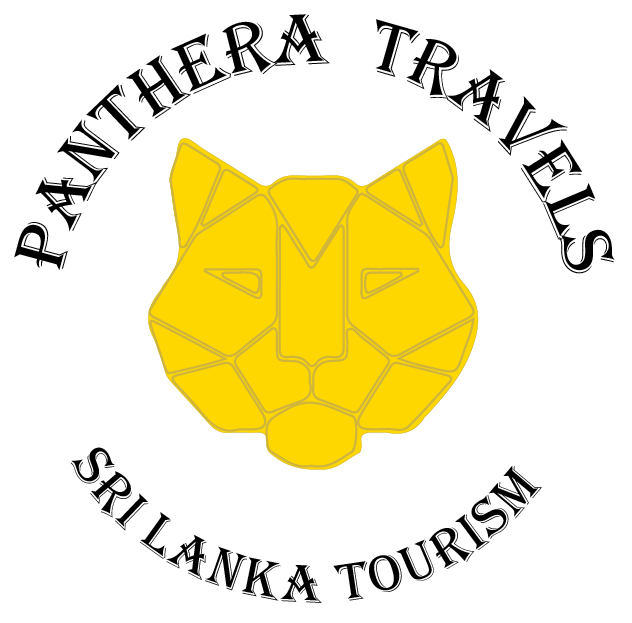Ramayana sites in Sri Lanka

Documentary : Ramayana sites
Location : South Asia, Sri Lanka
Coordinates :6°56′N 79°52′E
Avg temperature : 10 c to 35 c
Humidity: 75 % to 95%
Governing: Sri Lanka
Population : 21,893,579
Size : 65610 square Km
Provinces : 09 Provinces
Districts : 25 districts
Sri Lanka, known as the “Teardrop of India,” is not only famous for its stunning landscapes and rich cultural heritage but also for its association with the ancient Indian epic, the Ramayana. The Ramayana, written by Sage Valmiki, narrates the story of Lord Rama and his journey to rescue his wife, Sita, from the demon king Ravana. Sri Lanka plays a significant role in this epic, with several sites believed to be connected to the events described in the Ramayana.
There are 52 sites related to the Ramayan Epic in Sri Lanka. Sri Lanka has a special significance in the Ramayana tradition. Sri Lanka was the land of two principal characters, Ravana and Vibishana.
Let’s talk about Ramayana history in short before talking about the sites.
Ramayana took place during the pre-historic period of Sri Lanka. During the pre-historic times, Sri Lanka was then called Lankapura.
Dasharatha was the king of the Kosala kingdom and a scion of the Suryavamsha dynasty in Hinduism. He ruled from his capital at Ayodhyā. Dasharatha had three primary consorts: Kausalya, Sumitra, and Kaikeyi, and from these unions were born Rama, Bharata, Lakshmana, and Shatrughna.

King Dasartha wanted to retire, and crowning the eldest son to the throne was customary. Here it is, Lord Rama. On the day before Lord Rama was placed on the throne as the king of Ayodya, Queen Kaikeyi asked for the boons from King Dasaratha. First, her son Bharata will be crowned as the next king of Ayodhya and not Lord Rama. Second, to immediately send Lord Rama to the forest for 14 years. It is the birthday of Lord Rama. Ram Navami falls on the ninth day of the bright half of the Hindu month Chitrai (April).
Hanuman, the son of the Vayu Bahawan (wind – God) and Anjenadevi. A devotee of Lord Rama and chant Sri Rama Jeyam continuously. The other names for Hanumanji are Anjaneyar or Maruti. It is easy to identify Hanumanji because of the monkey face. Hanumanji’s birthday falls on the full moon day of the Chitrai (April). It is called Hanuman Jayanthi.
The demon king Ravana ruled Lanka. His family consisted of his sister Surpanakha, his brothers Vibhishana and Kumbhakarana, and his uncle Mareechan. Ravana’s sons are Meghnath and Indrajith. Ravana obtained the boon of death from God Shiva at the hands of a human foe. He traveled by air, and the aircraft was called “Dandumonara.”
Ravana kidnaps Sita because of the insult offered to his sister, Surpanakhi, by Luksmana. Sita was abducted by Ravana and taken to Lanka; on the way, she dropped her jewels as a clue for Rama to find her.
Setha Devi (the wife of Lord Rama) was kept in Lankapura by King Ravana. Seetha Devi was brought to Lankapura by King Ravana using “Puspakavimana,” an aircraft. ”Puspakavimana” also known as “Dandu Monara Yanthraya”. Later, Lord Rama, with the assistance of Lord Hanumanji, fought with King Ravana and took Seetha Devi back to Ayodhya in India. This is the segment relevant to Sri Lanka in Ramayana.
Let’s look at some of the significant places only,
Sigiriya (Ravana palace)

It is located in Sigiriya, Central Province. It is believed that the plateau top was the site of Ravana’s majestic palace, made of solid gold and crafted by Kubera, the God of Wealth, around 50 centuries ago. You will find several caves if you look closely towards the bottom of this rock plateau. As believed, one of these caves is where Ravana imprisoned Sita Devi after abducting her. The cave walls have (still) brightly colored paintings depicting scenes from the age of Ramayana. Other than that, you will spot several women portraits, believed to be portraits of the many wives of Ravana.
Sigiriya is connected to different eras of history. Today, it is a Unesco World Heritage Site and has become the world’s eighth wonder.
We have written a separate article about Sigiriya for those interested; the link follows immediately.
https://pantheratravels.com/sigiriya/
Sita Kotuwa

Located in Gurulupotha is on the Mahiyangana, Central province. It is believed that the city of Lankapura once stood in these jungles. The town had a beautiful palace for Queen Mandothari, surrounded by waterfalls, streams, and varieties of flora and fauna. Sitadevi was kept in this palace until she was moved to Ashoka Vatika. Sita Kotuwa means Sita’s fort and got its name because of Sita Devi’s stay here.
Sri Bhakta Hanuman Temple

Located in Ramboda, Nuwara Eliya, Central Province. Hanuman was searching for Sitadevi on these hills. Chinmaya Mission of Sri Lanka built a Hanuman temple at this site. The image of Lord Hanuman here is 16 feet. It is believed that Lord Hanuman was searching for Sitadevi from these hills of Ramboda.
The Chinmaya website link immediately https://www.chinmayamission.com/
Ramboda area is believed to be where Rama’s forces were gathered against Ravana.
Chariot path and Sita tear pond

Located in Ramboda, Nuwara Eliya, Central Province. To date, no vegetation grows on this passage except grass. King Ravana is believed to have taken this passage on top of these hills to show Sitadevi the beauty of his kingdom.
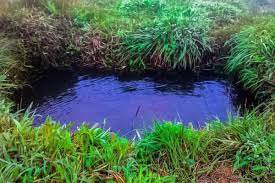
The barren land here is believed to be where King Ravana took Sitadevi from his capital city, Lankapura, to Ashoka Vatika, a paradise on earth.
Ravanagoda

Located in Kotmale, Nuwara Eliya, Central Province.It is a place where Sitadevi stayed during her transit. This area is also linked with tunnels and caves, which run through to other parts of King Ravana’s kingdom. This area is also connected with tunnels and caves, which run through to other parts of King Ravana’s kingdom.
Sita Amman Temple

Located in Nuwara Eliya, Central Province. The soil is black– it is believed that Hanmanji burnt this area before he left Sri Lanka. It is thought that the Sita devi was kept captive at this site by King Ravana.
There is a stream by the side of the temple. The footprints of Lord Hanuman are found. Some are small, and some are large, which tells us of the immense powers of Hanuman transforming himself into any size.
Gayathri peedam

Located in Nuwara Eliya, Central Province. Gayathri peedam is believed to be where King Ravana’s son Meghanath propitiated Lord Shiva with penance and poojas and was granted supernatural powers by Lord Shiva.
This is the first and foremost temple built for Gayathri Amman in Sri Lanka, and the Shiva Lingam found in this temple was brought from the holy river Narmada. This is the first and foremost temple built for Gayathri Amman in Sri Lanka. Shiva Lingam, found in this temple, was brought from the holy river Narmada.
Divurumpola

Located in Welimada, Uva Province. At this location, Sita underwent the “Agni” test to prove her innocence to Rama after being rescued by him. Divurumpola, meaning a place of oath, is a popular place of worship among locals. The temple depicts paintings of the Ramayana epic.
Ravana Cave

it is located in Ella, Uva Province. These tunnels prove beyond doubt the architectural brilliance of King Ravana. These tunnels served as a quick means of transport through the hills and a secret passage. These tunnels networked all the important cities, airports, and dairy farms. A close look at these tunnels indicates they are artificial and not natural.
Nil Diya Pokuna (Blue wáter pond)

It is located in Ella, Nil Diya Pokuna an underwater pond in a cave or a tunnel complex believed to have been built by King Ravana.
This is a tracking adventure passing through tunnels in the mountain. You must prepare for that and have a professional local tracking guide for the mountain adventure. You have to acknowledge and discuss this with your tour operator. Then with your tour guide. They will support you only if you’re capable.
Ravana Ella Falls
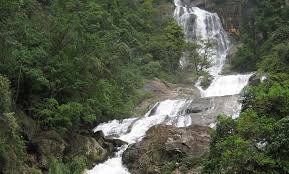
They are located in Ella, Uva Province. Ravana Ella Falls, located in the village of Ella, is believed to be where Ravana hid Sita after abducting her. The waterfall cascades down from a height of approximately 25 meters and offers a breathtaking view amidst the surrounding lush greenery. Visitors can enjoy the beauty of the falls while immersing themselves in the legends of the Ramayana.
We have written a separate article about Ella for those interested; the link follows immediately.
https://pantheratravels.com/ella/
Kataragama

Located in Kataragama, Uva Province. This is the temple of Lord Karthikeya Subramaniam at Kataragama. Lord Indra requested Lord Karthikeya to go to the battlefield on the last day of war. This was done to protect Lord Rama from the wrath of Brahmasthra aimed by King Ravana, which otherwise would have weakened Lord Rama. The benefit was one of the most potent weapons, Brahma asthma, aimed at Lord Rama for the second time and rendered useless by Lord Karthikeya’s presence.
Kelaniya Veebeshana Temple (Kelaniya Raja Maha Vihara)

It is located in Kelaniya, Western Province. Kelaniya is the place where King Veebeshana ruled after being crowned by Lakshmana. Lord Rama was in exile for 14 years and could not participate in any coronation ceremony, so he deputed his younger brother, Prince Lakshmana, to crown Veebeshana. Today, a Buddhist shrine and a temple for King Veebeshana exist in this very place.
There are murals enshrined outside the Buddhist temple depicting the crowning of King Veebeshana. Many temples for King Veebeshana are found throughout Lanka, and he is still considered one of the four guardian deities of Sri Lanka. It is a fact that there is no temple for King Ravana, whereas many exist for King Veebeshana. This proves that his stand towards dharma and justice made him a god in Sri Lanka.
Muneswaram Temple
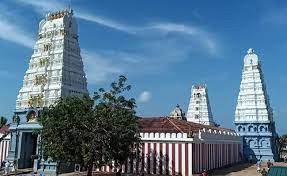
It is located in Chillow, North Western Province. After his victorious battle, Lord Rama left for Ayodhya in one of King Ravana’s vimanas. He felt he was being followed by “Bramhaasthi Dosham” as he had killed King Ravana. He stopped the vimana at this juncture because he felt the “Brahmaasthi Dosham” was not following him at this place. He ascended from the vimana and asked God Shiva for a remedy. God Shiva blessed Lord Rama and advised him to install and pray four lingams at Manavari, Thiru Koneshwaram, Thiru Ketheshwaram, and Rameshwaram in India as the only remedy to get rid of the doshas.
Manawari Temple

It is located in Chillow, North Western Province. Manavari is the first place where Lord Rama installed and prayed the Siva lingam after the end of the war with King Ravana. To date, this lingam is called Ramalinga. Rama made this Lingam, and therefore, it is called Ramalingam. Rameshwaram is the only other lingam in the world named after Lord Rama.
Thiru Koneswaram Temple

It is located in Trinco, Eastern Province. Rishi Agastya built Thiru Koneswaram on the instructions of Lord Shiva, who was impressed by the devotion of King Ravana. The monument contains its main shrine to Shiva in Kona-Ishvara, shortened to Konesar. The most sacred of the Pancha Ishwaram temples (Five Ishwaram temples – Naguleswaram, Ketheeswaram, Koneswaram, Munneswaram, and Tondeswaram) of Sri Lanka. This place is unique because the Lord made a temple for his devotees to reward his dedication. Lord Rama is believed to have offered his prayers here to get rid of the voodoo of killing Ravana.
We have written a separate article about Trinco City tour for those interested; the link follows immediately.
https://pantheratravels.com/trinco-city-tour/
Kanniya

It is located in Trinco, Eastern Province. Kanniya is where King Ravana carried out the last rites for his mother. When he was not able to find water to perform his rites, he, in sheer anger, pierced his Trishul on the ground seven times, and water started gushing out immediately. It is believed that the king’s anger subsided on seeing the water, and similarly, the warmth of the water was also reduced. The temperature of the water is different in all the seven wells.
Thiru Ketheswaram

It is located in Mannar, Northern Province. Thiru Ketheshwaram is the third Lingam in Lanka, which was installed and prayed by Lord Rama to get rid of the Brahmasthi dosham. It is not possible to visit at present due to security reasons.
Nagapushni Amman Temple

It is located in Nagadeepa (Nainathiv), Jaffna, North province. Sakthi Peetams are local temples devoted to Goddess Adhiparasakthi. The only one in Sri Lanka is Nagapushni Amman Temple (out of 64), the capital of King Ravana.
It is believed that this is where the Lord Hanuman was tested by Surasa Devi, the mother of Nagas’ for his courage and intelligence.
We have written a separate article about Jaffna City tour for those interested; the link follows immediately.
https://pantheratravels.com/jaffna-city-tour/
Sanjeewani Drops

Unable to identify the life-saving herbs on the mountain, Hanuman carried the part of the mountain. Parts of it fell in five places. Rumasala in Galle, Dolu Kanda in Kurunegala, Ritigala on Anuradhapura road, Thalladi in Mannar and Kachchativu in the north.
At different points during the war, Lord Rama and Lakshmana were hit by mighty arrows and fell unconscious. Lord Hanuman was instructed to fetch the life-saving herbs from the Himalayas to bring them back to life. Hanuman went to the hill, lifted the whole hill, and got it, as he could not identify the life-saving herbs alone. Parts from the hill fell on five places in Sri Lanka.
Those are highlights of the significant paces.
How do you plan to visit Ramayana sites in Sri Lanka?
Ramayana sites are scattered all over the island, as you can see in the Ramayana sites on the Sri Lanka map. It would be best if you had time to travel from one site to another. You have to accommodate those destinations nearby. You don’t travel continuously without seeing other beautiful sceneries and engage in other activities on the way to sites.

The sudden question comes to your mind: Where do you start? Which site is first? Planning sites according to the number of days on your travel plan is recommended.
If you have around ten days or more, you can visit the above sites. You can start by visiting the Manavari temple from the Airport or transit hotel directly and travel towards the Northern province. Descend to Southern Proving via Central province covering all the sites.
If you are visiting for seven days or less, you can start by visiting Sri Hanuma Bhakthan temple from the Airport or transit hotel in Kandy and travel to the Central province. Descend to the Southern Province, covering all the sites in the Central Province. You cannot visit sites in the north.
Typically, travel agents and tour operators create ideal itineraries for you. Tour executives are experts in crafting itineraries according to the time and distance between sites to go.
Foods in pilgrimage
The main concern is the food along with the pilgrimage. There are complete pilgrimages, and regular visitors want to have both leisure and pilgrimage mixed, which are very common nowadays. Most of the visitors look for basically Indian foods on pilgrimage visits. Especially vegetarian foods. Sometimes Jain foods.
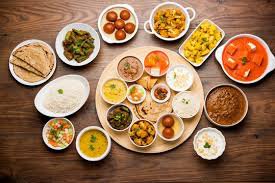
Usually, Indian food is not available island-wide entirely. Specific restaurants serve Indian and European food in the same place, which is more convenient. Hotels practice the same scenario, arranging Indian and European food at the same buffet. They are preparing Jain food on request only as Jain pilgrims are not ordinary. Your tour executive and tour guide will discuss this with restaurant and hotel chefs. Especially SLTDA-licensed tour guides are trained to arrange what guess is required and maintain good relationships with restaurant managers and chefs. Not only that, SLTDA guides are taught about Indian culture, traditions, customs, and interests.
We have written a separate article about SLTDA-licensed guides for those interested; the link follows immediately.
https://pantheratravels.com/professional-guiding/
However, you get delicious Indian food everywhere near the sites. Not only just namely Indian food but sometimes you have a chance to get regional dishes in India like north Indian food and south Indian food. You need to discuss this with your tour executive and guide to get more delicious dishes as you wish.
Exploring these Ramayana sites in Sri Lanka offers a unique opportunity to delve into the ancient legends and immerse oneself in the country’s rich cultural heritage. Whether you are a history enthusiast or a spiritual seeker, these sites provide a glimpse into the epic tale of the Ramayana and its enduring influence on Sri Lankan culture.
Remember to respect the sanctity of these sites and follow any guidelines or restrictions put in place by the local authorities. Enjoy your journey through the Ramayana sites in Sri Lanka and embrace the captivating stories that have shaped the cultural tapestry of this beautiful island nation.

Hope you enjoyed the article. You can scroll down to our featured posts. Before you go to featured posts, Subscribe to read our new posts. We never use this email for promotions and offers. Our only purpose is for you to read our valuable content.
Featured Blog Posts
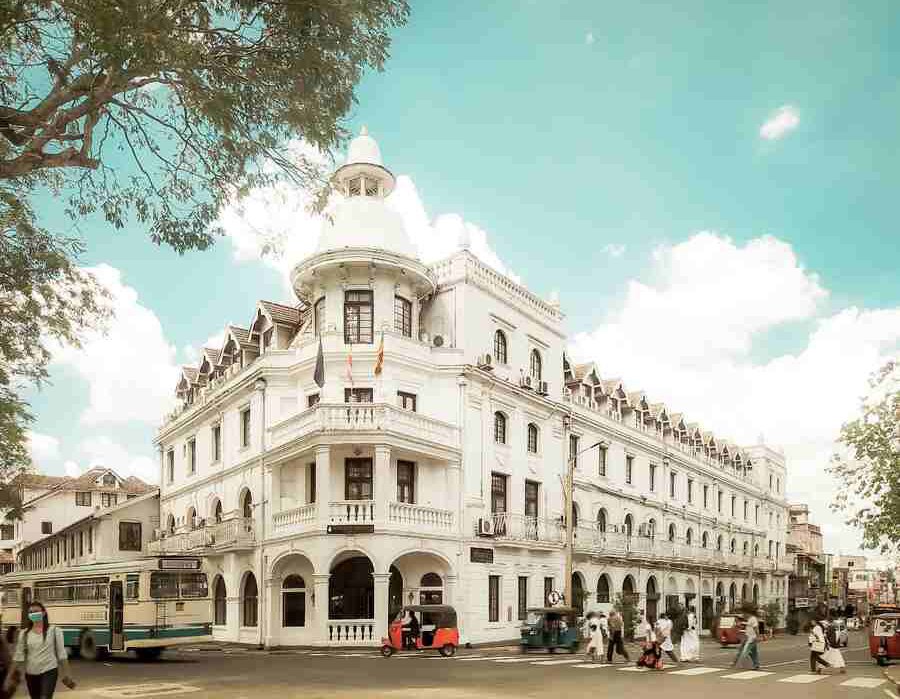
- Featured, Places

- Featured, Travel tips

- Featured, Places
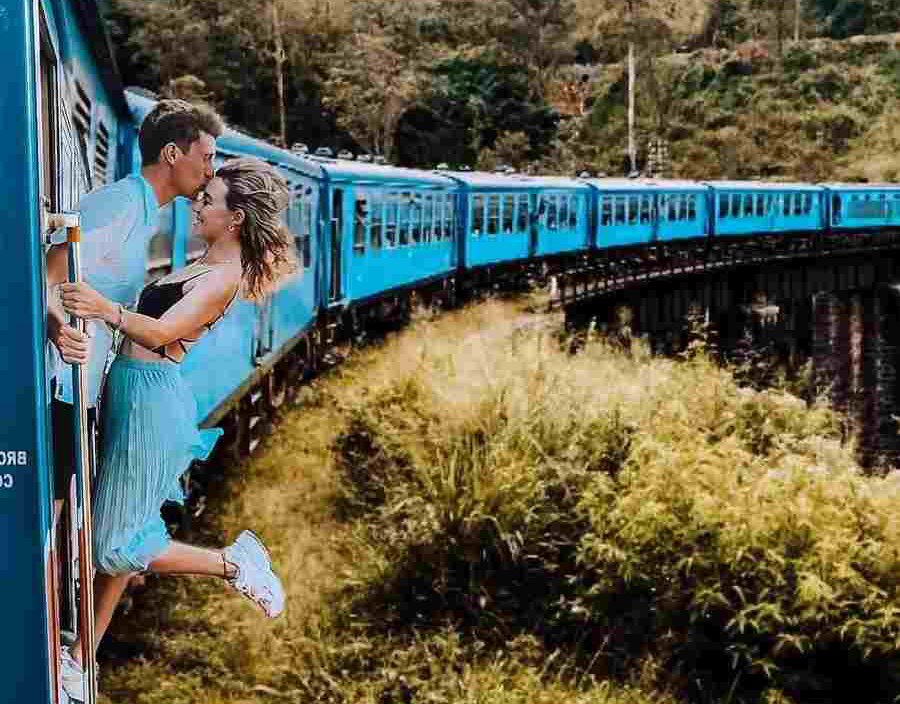
- Activities, Featured

- Activities, Featured, Wild life
